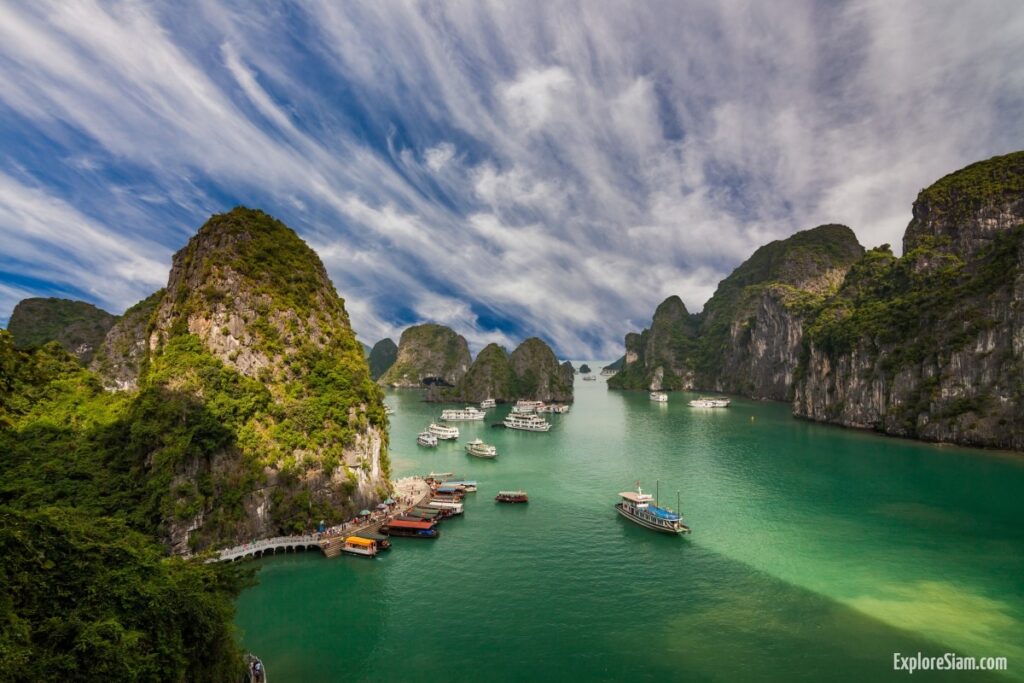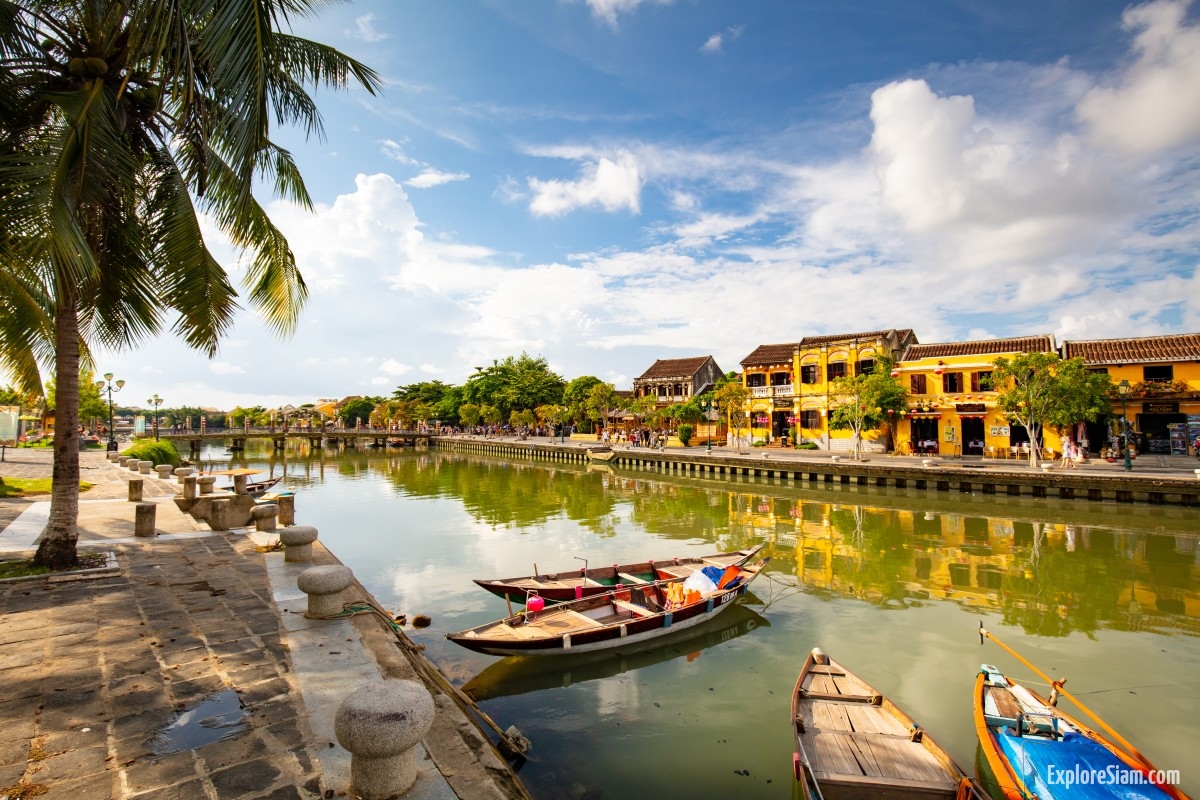Vietnam, a country of breathtaking landscapes, rich history, and vibrant culture, offers a myriad of experiences for travelers. From the lush terraced fields of the north to the bustling cities and serene beaches of the south, each region of Vietnam presents its unique charm and attractions. This guide will take you through the diverse tourist regions of Vietnam, highlighting what makes each one a must-visit destination.
Northern Vietnam
Northern Vietnam is a region of dramatic landscapes and deep cultural heritage. The capital city, Hanoi, is often the starting point for many travelers. Hanoi is a blend of old and new, where ancient temples and colonial architecture sit alongside modern skyscrapers. The Old Quarter, with its narrow streets and bustling markets, offers a glimpse into the city’s rich past and vibrant present. Visitors can explore historical sites such as the Ho Chi Minh Mausoleum, the Temple of Literature, and the serene Hoan Kiem Lake.
To the east of Hanoi lies Ha Long Bay, a UNESCO World Heritage Site known for its emerald waters and thousands of towering limestone islands. A cruise on a traditional junk boat is the best way to experience the bay’s stunning beauty. Further north, the terraced rice fields of Sapa provide a picturesque backdrop for trekking and interacting with the local ethnic minority communities. The region’s cooler climate and stunning vistas make it a popular escape from the heat of the lowlands.
Central Vietnam
Central Vietnam is a region of historic cities, beautiful beaches, and cultural treasures. Hue, the former imperial capital, is famous for its ancient citadel, royal tombs, and pagodas. The city’s Perfume River adds to its charm, offering serene boat rides with views of historical landmarks. The Imperial City, a walled fortress and palace, stands as a testament to Vietnam’s royal heritage.
South of Hue, the coastal city of Da Nang is known for its sandy beaches and modern skyline. Nearby, the ancient town of Hoi An, a UNESCO World Heritage Site, captivates visitors with its well-preserved architecture and atmospheric streets. Hoi An’s historic buildings, colorful lanterns, and riverside setting make it a romantic and picturesque destination. The town is also famous for its tailor shops, where visitors can have custom-made clothing crafted in just a few days.
Central Vietnam is also home to the stunning Phong Nha-Ke Bang National Park, another UNESCO World Heritage Site. The park boasts some of the world’s most impressive caves, including the vast Son Doong Cave, which is the largest cave in the world. Adventurous travelers can explore the park’s underground rivers, towering stalactites, and lush jungle landscapes.
Southern Vietnam
Southern Vietnam is characterized by its dynamic cities, lush landscapes, and vibrant culture. Ho Chi Minh City (formerly Saigon) is the country’s largest city and economic hub. It is a bustling metropolis where modern skyscrapers rise alongside historic French colonial buildings. The city’s attractions include the War Remnants Museum, the Notre-Dame Cathedral Basilica, and the bustling Ben Thanh Market.
To the south of Ho Chi Minh City lies the Mekong Delta, a vast network of rivers, swamps, and islands. The delta is often referred to as the “Rice Bowl” of Vietnam due to its fertile land and abundant rice production. A visit to the Mekong Delta offers a chance to explore floating markets, traditional villages, and lush landscapes by boat. The region’s unique way of life, closely tied to the waterways, provides a fascinating glimpse into rural Vietnamese culture.
Further south, the island of Phu Quoc is known for its pristine beaches, clear waters, and luxury resorts. The island’s national park offers opportunities for hiking and wildlife spotting, while its vibrant coral reefs make it a popular destination for snorkeling and diving.

The Central Highlands
The Central Highlands of Vietnam, known for their rolling hills, coffee plantations, and ethnic diversity, offer a different experience from the coastal regions. The city of Da Lat, often referred to as the “City of Eternal Spring,” is a popular retreat due to its cool climate and beautiful scenery. Da Lat’s French colonial architecture, flower gardens, and surrounding pine forests create a charming and relaxing atmosphere.
The Central Highlands are also home to numerous ethnic minority groups, each with its distinct culture and traditions. Visiting villages in this region provides an opportunity to learn about their unique way of life, traditional crafts, and vibrant festivals.
Coastal Regions
Vietnam’s long coastline is dotted with beautiful beaches and coastal towns. The beaches of Nha Trang are famous for their crystal-clear waters, soft sand, and vibrant nightlife. Nha Trang’s Vinpearl Island, accessible by a cable car, offers luxury resorts, an amusement park, and an aquarium.
Further south, the coastal town of Mui Ne is known for its stunning sand dunes and excellent conditions for kite surfing and windsurfing. The town’s laid-back atmosphere and beautiful sunsets make it a perfect destination for relaxation.
In conclusion, Vietnam’s diverse regions offer something for every traveler. Whether you’re drawn to the bustling cities, tranquil beaches, lush highlands, or historic sites, each part of Vietnam provides a unique and enriching experience. Exploring these regions reveals the rich tapestry of culture, history, and natural beauty that makes Vietnam a truly captivating destination.





